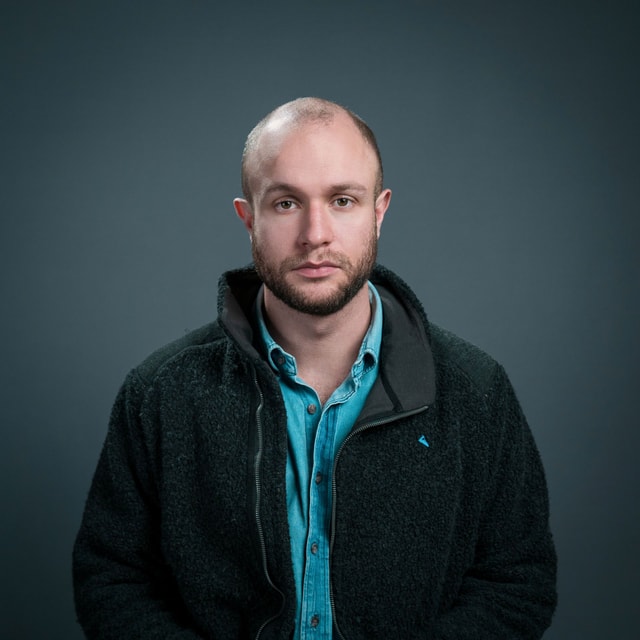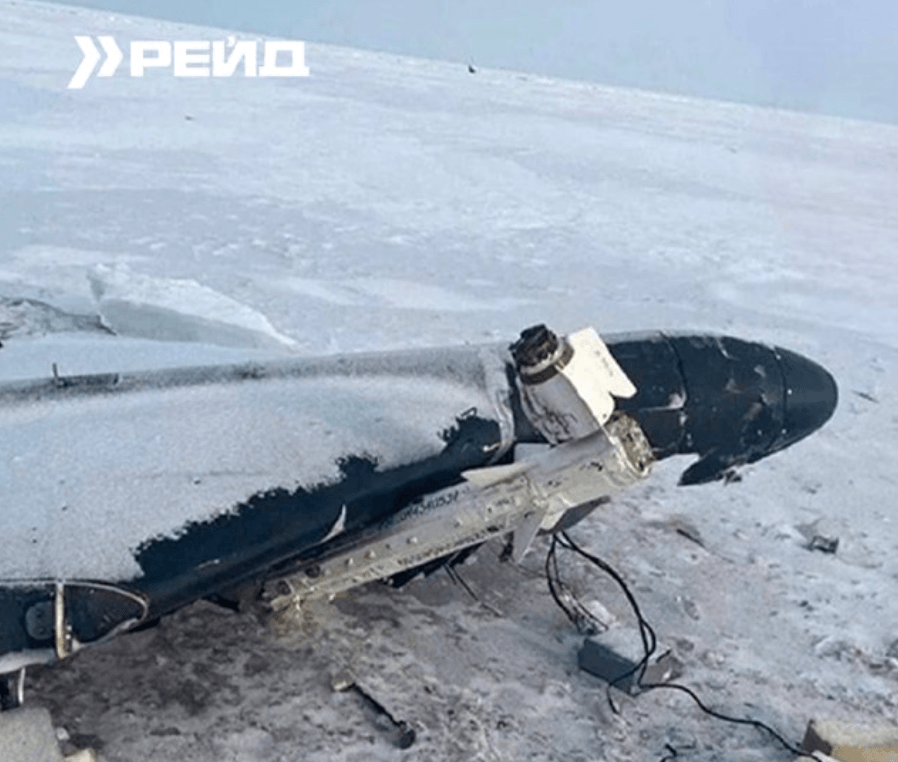Destruction, isolation, and controversy in frontline monastery of Sviatohirsk

SVIATOHIRSK, Donetsk Oblast – For centuries, the gleaming whitewashed walls of the Sviatohirsk Dormition Lavra, peeking out of the hilly forest above the Siverskyi Donets River, attracted pilgrims from across the Eastern Orthodox world. Now, in an obscene imitation of a Jackson Pollock painting, they stand in many places splattered with shrapnel marks from artillery and rocket strikes.
“The first brother was killed here, when the building opposite was hit,” said Father Konan, a senior priest at the monastery, pointing to one of the shredded walls. “The second came out to have a look and another rocket landed right here in front of him.”
Two monks and a nun were killed that day, on May 30, as Russian forces looked to storm the area at the height of their brutal offensive in the Donbas. Five members of the clergy in total were killed during the battles for this area, with white crosses marking their graves planted in a quiet corner next to the main church building.
“The one time that we didn't hold a service was when the brothers were killed,” said Konan, 52. “Otherwise, we held them in the crypts without fail”.
Russian troops reached the town of Sviatohirsk across the river on June 6, but with the bridge blown up and the heights opposite still held by Ukraine, neither side could claim to hold the monastery itself.

Thus began four months of life on the zero line of the Donbas front for the inhabitants of the Lavra, whose ranks were swelled by hundreds of civilians from the surrounding villages seeking refuge.
The Sviatohirsk Lavra belongs to the controversial Ukrainian Orthodox Church – Moscow Patriarchate (UOC-MP) and conducts its sermons and official business in Russian. In 2009, the monastery hosted a visit from Russian Orthodox Patriarch Kirill, who has since labeled Russia’s aggression against Ukraine a “holy war.”
In 2022, however, Russia’s war arrived in Sviatohirsk, in all its indiscriminate and destructive reality. As priests were killed by shelling and centuries-old churches burnt to the ground, the traditionally pro-Moscow leanings of the monastery retreated, replaced by conflicted and often contradictory calls for “peace.”
As the Ukrainian army liberated territories east of Sviatohirsk over September and October, relative quiet returned to this idyllic bend in the river.
The Kyiv Independent gained a rare inside look into how the controversial monastery lived over four months of war.
Caught in the crossfire
Upturned concrete and twisted iron are all that remains of the bridge that once connected the monastery to the town of Sviatohirsk.
The destruction of the bridge cut off the Sviatohirsk Lavra from the Russian-occupied town, but also its residents from the outside world, from their homes and neighbors, and from information about how the war was progressing.
Roman, a 47-year-old handyman who declined to give his last name for privacy reasons, still hasn’t been able to return to his home in Sviatohirsk since he took refuge in mid-May.
“Once the bridge was gone – I don’t remember whether it was on the third or fourth day – then there was no (mobile) connection anymore,” he said, “We did not even track the news. On the rare occasion that volunteers came, yes, we asked them what was happening.”
Most important though for those in the Lavra, however, was that blowing up the bridge prevented Russian troops from entering the monastery grounds. When Russian forces initially swept into the area, the world lacked information about whether or not they entered the religious site, and how they were met. Russian state media claimed to have “liberated” the Lavra on June 6, but only posted drone footage from the air.
The reality was different. Not only did Russian forces fail to cross the river, but the commanding position of the hills around the monastery, still held by Ukrainian forces, meant that the Russian presence in the town of Sviatohirsk was untenable from the beginning.
Roman confirmed that Ukrainian troops did not station themselves in the monastery itself during the battle. “When Ukrainian soldiers came to evacuate some of our worst wounded,” Roman said, “they told us that the Russians only stayed a couple of days before withdrawing from the town.”
The departure of Russian troops from Sviatohirsk in early June, however, did not bring an end to the indiscriminate shelling of the area. In defiance of any military logic, shrapnel marks and craters can be seen in greenhouses, between trees, and on walls facing all directions.
“They were hitting us from all sides, really,” said Konan. “There is no other way to explain all of these impacts.”
It was during these most intense weeks of fighting that most of the damage to Sviatohirsk’s priceless Orthodox cultural heritage was done. As early as May 7, Russian forces destroyed the St. George’s Skete, a complex belonging to the Lavra 15 kilometers from Sviatohirsk along the contested Sloviansk-Izium highway.
On June 4, when the fighting had reached the monastery itself, the world was witness to a video of the All-Saints’ Skete, a traditional wooden church over the hill from the main buildings, in flames after being struck by Russian rounds fired from across the river. Where the church once stood, its brick foundations and thousands of iron nails are all that remains.
Holy sanctuary
Behind the exterior of death and isolation, the Sviatohirsk Lavra also had another face, that of a place of refuge from the fighting for residents of the surrounding settlements.
According to Roman, in addition to the permanent staff of the monastery, over 1,000 refugees lived in the Lavra during the battles, some of which had first moved when Russia’s war began in 2014.
“There are many believers, but not everyone,” he said. Many others simply had nowhere else to go.”
Anna Ihnatenko, a 19-year-old school teacher from nearby Bohorodyche, sought refuge in the Lavra when her village started coming under fire in mid-May. “It was the obvious place to come, these walls are home to me,” said Ihnatenko, who attended religious school at the monastery in her childhood. “We had no idea about anything, except that we needed to survive.”
Up from the main complex of the Lavra into the lush hills above, the service buildings of the monastery are testament to centuries-long traditions of hospitality and self-sufficient living. Large greenhouses ensure a steady supply of fresh produce, goats and chickens provide milk and eggs, while a team of blacksmiths works in the yard to weld wood-burning stoves for winter in the basements.
With surrounding settlements lacking electricity, water, gas, and often regular access to fresh food, the contrast in living standards is hard to ignore.
For Father Konan, providing for people in times of war was the obvious duty of the Lavra. “I have got to know the generation who lived through (World War II) , who told me their stories,” he said. “For that reason, I knew that there was only one thing to do – to live – and to live you need to eat, and to eat you need to work.”
The months of sheltering didn’t pass without tensions among the refugees, who lived in makeshift accommodation in the monastery’s basements and crypts. “People were nervous and often angry, coming from all different places,” said Ihnatenko. “Maybe because of politics, but I did my best to stay well away from that.”
Foreign agents?
When Russia’s war against Ukraine began in 2014, the political tussle over Ukraine’s Orthodox churches was one of the key battlegrounds in the country’s bid to cut ties with Moscow.
While the so-called Kyiv Patriarchate of the Orthodox Church of Ukraine campaigned for recognition from the Ecumenical Patriarchate in Constantinople, winning it in 2018, the Sviatohirsk Lavra was an outspoken stronghold of the Russia-backed UOC-MP. In 2018, Metropolitan Arsenii, the monastery’s bishop and spiritual leader still serving today, accused Ukraine of bombing occupied Sloviansk in 2014, in line with Russian propaganda, and supported Russia’s sham referendums in occupied parts of Donbas and Crimea.
When Russia launched its full-scale invasion of Ukraine, hundreds of UOC-MP parishes, many of which still existed even in the west of Ukraine, switched to the Ukrainian church. With political pressure mounting and a ban on the activities of UOC-MP looming, the leadership finally announced that it would ties to the Russian Orthodox Church on May 27, when the battles for Sviatohirsk were at their fiercest. It remains unclear if this decision has in fact been implemented in practice.

Russia’s invasion has hardened the majority of Ukrainian society against any actor with ties to Russia, and it’s unlikely the UOC-MP will never be able to shed its “pro-Russian” label.
After Sviatohirsk’s four-month brush with Russian aggression, Father Konan doesn’t initially go beyond a basic call for peace in his conversation wit the Kyiv Independent.
“The most important thing is that people don't die,” he said, adding that neither side wanted this war.
Pressed harder on his position on Russian Patriarch Kirill and the latter’s zealous support of the war, Konan was visibly saddened. “Well… we live in Ukraine, not Russia,” he said.
“There was once a Russian bishop in Japan, and when the two countries went to war (in 1904) his congregation asked him what to do. ‘You should pray for your country, and I will pray for mine,’ he said. It’s the same here; we are in Ukraine, and we pray for Ukraine.”
As Ukraine’s counteroffensive in the area picked up speed in late September, groups of Ukrainian soldiers stayed overnight in the Lavra before crossing the river in small boats. “It’s gotten quieter now that they’ve liberated more territory,” said Konan, using a word that hardly lines up with the Lavra’s pro-Russian reputation.

On the heights overlooking the Sviatohirsk Lavra, Ukrainian soldiers stand guard at the base of a monumental Soviet-era statue of Bolshevik official Fiodor Sergeiev, better known as Comrade Artem.
Watching over the monastery as he did during the battles in May, Mykola, a Ukrainian officer on duty forbidden from giving his full name, has no quarrels with the “pro-Moscow” Lavra or its clergy.
“We don’t speak much, but we don’t have anything against them,” he said. “They are people of God, and we are all the same in God’s eyes. We have our job and they have theirs.”
Note from the author:
Hi, I'm Francis Farrell, who wrote this piece from on the ground in some of the areas hardest hit by Russia’s war of aggression against Ukraine. As you read this, Russia is trying to plunge Ukrainian cities into a deep, cold winter, while Ukrainians in Donbas are left in an even more dire position without basic utilities. The Ukrainian army will nonetheless continue working to liberate the occupied territories, but there is still a long way to go before victory. Please consider continuing to support our reporting.




















